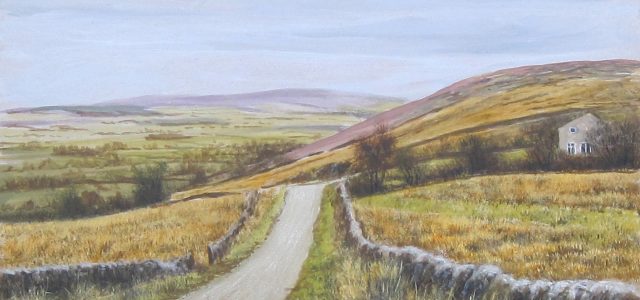
Bremetanaccum And The North
Fell walker and keen historian Andrew Stachulski follows one of northern England’s principal Roman roads through Bowland
Strictly, the fine small town of Ribchester lies just outside the Forest of Bowland by about one mile, but sometimes definitions are better ignored. Beautifully situated on the banks of the mature River Ribble, Ribchester boasts a rich history, which may extend well before Roman times into the Bronze Age. Undoubtedly its fine Roman museum, detailing the local fort of Bremetennacum, is the reason for many visitors’ interest, and among Roman forts it is certainly one of the best documented. In later Roman times it seems to have become a centre for retired soldiers.
The town actually lay on one of northern England’s most important Roman roads, emanating from Manchester, and to trace the road’s course through Bowland towards its first destination of Burrow in Lonsdale, where there was a fort, is a fascinating piece of detective work. It was presented both lucidly and entertainingly by Philip Graystone in ‘Walking Roman Roads in Bowland’. Formerly a local headmaster and lecturer of the University of Lancaster and building on a number of scholarly texts, he adds a contagious enthusiasm which is evident at a glance.
Leaving the town by Stoneygate Lane, you meet a section of Roman road very soon and cross it again at the junction with the B road further on just east of Knowle Green. Drive on to the car park on Jeffrey Hill, two miles further, where you can enjoy a wonderful view and, a few yards away, a clear section of Roman road running just below the present-day minor road in a south-west north-east direction. A clear groove giving the general direction of the ancient road is still discernible. From this spot, near the remote Cardwell House, you can see how the Romans planned their route – six miles north-east lies Browsholme Heights, the next vantage point and a significant change of direction, where the road swings more into the north.
In fact, there is a clear course of the old road extending for some miles north of the Hodder Valley, and present-day minor roads have freely made use of sections. One of the best is offered by the minor road heading from just north of the hamlet of Cow Ark, bound for Newton-in-Bowland and passing Browsholme Heights as mentioned, within the Browsholme estate.
Perhaps the most intriguing section of the road lies some miles further on, where it crosses some of Bowland’s highest fells, staying around the 1400 ft contour for several miles. Here the Romans appear to have inherited and used an earlier track, starting in the vicinity of Croasdale Quarry, some five miles north north-west of Slaidburn. The name Salter Fell is significant, probably signifying the transport of salt from Morecambe Bay – the name Hornby Road, preferred on OS maps, indicates the destination of the current track – and what a wonderful walkers’ route it makes.
The Roman road parts company with the present-day track just beyond Shooters Clough, the last small stream to enter the Ribble catchment before the Ribble-Lune watershed. A little further on, descending into Hindburndale, the course of the road across the lower pastures is remarkably clear.
Beyond Lowgill, a delightful secluded hamlet with some fine old cottages, the road’s immediate destination of Burrow in Lonsdale (‘Lunesdale’) is about six miles further. On this section you also pass out of the Forest of Bowland, making Burrow a natural stopping point. There was a Roman fort here, Galacum, about one mile east of Whittington. Sadly, little remains of this fort, as it was later built over, but as so often an aerial view shows the location rather clearly.
Kirkby Lonsdale is just two miles further on. The Roman road itself forges determinedly ahead, as they all did, aiming eventually for Carlisle. What did the Romans do for us ask the doubters? Well, actually a great deal, and by taking part in this kind of country detective work we can find great satisfaction and recreation. There is so much history on our doorstep, and the best way to enjoy it is to enter into it. Go, see!
‘Walking Roman Roads in Bowland’, by Philip Graystone, Centre for NW Studies, University of Lancaster, 1992
Andrew Stachulski is joint author, with Helen Shaw of ‘The Forest of Bowland’, published by Merlin Unwin at £14.99

